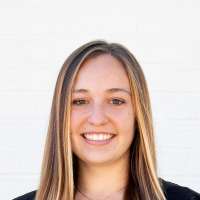- Utah Valley Marathon announced an adjusted course to avoid Boston Marathon time penalties.
- The previous course had 1,614 feet of downhill elevation, just over the 1,500 feet threshold.
- The rerouted course is 1,444 feet of downhill elevation, making it the "fastest" Boston qualifier.
PROVO — After new guidelines were released by the Boston Athletic Association, the Utah Valley Marathon has announced an adjusted course to allow runners to qualify for the Boston Marathon without time penalties.
The Boston Athletic Association announced on June 16 that new standards would be enforced for qualifying marathons with significant elevation drops. Races with more than 1,500 feet of downhill elevation will give racers a 5-minute time penalty, and courses with more than 3,000 feet of downhill elevation will give racers a 10-minute penalty.
These new standards will take effect in September, when the qualifying window opens for the 2027 Boston Marathon.
Utah Valley Marathon assistant race director Ethan Curtis said the announcement was a "big surprise."
"A lot of marathons in Utah definitely use elevation as a big draw to people. Marathons like St. George, they are affected by this quite a bit, and Big Cottonwood also ... so we had to figure out what the heck to do because a lot of people run our race in hopes to qualify for Boston," Curtis said.
The Utah Valley Marathon has always started in the small town of Wallsburg, Wasatch County, before heading toward Deer Creek Reservoir, and then snaking down Provo Canyon to finish in downtown Provo. This course has approximately 1,614 feet of downhill elevation, making the race just over the threshold into time-penalty territory.
"The process to reroute the course, or to start your course, is super interesting; it's also really inconvenient and weird," Curtis said.
He was unable to help with the process as he got married and had his honeymoon right at the time the announcement was made, leaving his boss, Hyrum Oaks, to tackle the challenge. Part of the reroute process includes an individual riding a bike through the course while a track and field official monitors to ensure the distance is accurate.
Because Wallsburg is such a small town, all racers are taken by bus to the starting line. Curtis said the marathon has had a great relationship with some farmers who have allowed the buses to turn around in their fields because the roads in the town are narrow.
With the course change, however, Oaks had to go door-to-door, asking if anyone else would be willing to let their land be used for a turnaround. With some promises that no grass would be killed, Oaks successfully devised a new course that has a small reroute in the first 3.2 miles in Wallsburg, resulting in a net downhill elevation of 1,444 feet.
With such a large downhill while still being under the threshold, the Utah Valley Marathon is "arguably the fastest Boston qualifier in the U.S.," Curtis said.
"For a lot of runners, the dream is to qualify for Boston. It's a big goal, and I think our course has the best odds to do that without being penalized. It's a great, beautiful course to try out. Even if you don't qualify, it's still a great experience," he said.
Out of the 6,500 runners in this year's marathon in June, about 1,300 came from out of state. Each year, the race has "hundreds" of people who qualify for the Boston Marathon and receive a special shirt at the finish line for qualifying. This year, 144 racers qualified.
"We try to reward people that qualify for Boston," Curtis said. "We believe our race is, as of right now, the easiest course to do it on, and it's also probably the most beautiful, too."
Curtis said he and the other race officials are grateful the announcement came right after their race, so they have plenty of time to change the course for next year.









